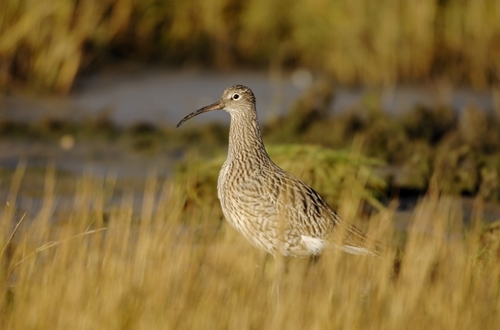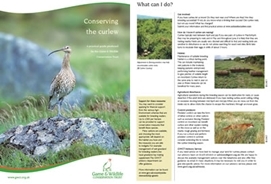Curlew belong to a group of birds known as “waders”, because they spend parts of their life wading in shallow waters. Curlew spend the winter in coastal areas - around the UK they can be found on mudflats and estuaries in large flocks, sometimes numbering into the thousands. But these apparently large numbers mask a serious conservation issue.

In the summer, curlew migrate to their breeding grounds. Historically, curlew were found breeding across Britain - in meadows, marshes and arable fields where they are now rarely seen. Today, their breeding range has contracted and they are more often thought of as a bird of the uplands, breeding on moorland areas and farms around the hill edge. The UK’s breeding curlew population has halved in the last 25 years.
This decline has also been recorded in most of the other countries where curlew breed. It is estimated by the International Union for the Conservation of Nature (IUCN) that worldwide there has been a 20-30% reduction in curlew breeding numbers in the past 15 years. Curlew are now considered to be “vulnerable” on the European red list, meaning that the species face a high risk of extinction.
The UK plays an important role in shaping curlew conservation, because we support important breeding and overwintering populations. With a fifth of the world’s curlew in winter, and around a quarter of the world’s breeding pairs in spring and summer, what happens to the curlew in the UK will have substantial consequences for the future of the species.
Although curlew are declining across the UK, this loss has been most dramatic in the lowlands. The UK’s so-called “southern curlew”, those birds nesting below an imagined line passing through Birmingham (see map), are now estimated at only 250-300 pairs. If nothing changes, it is thought that these birds will be gone in eight years.
There are many reasons for the hard times that curlew face – including loss and fragmentation of breeding habitat, increased nest and chick predation, afforestation, human disturbance and nest destruction due to agricultural activities. Many of these are felt more keenly in the lowlands, and therefore the South of the UK, than in the uplands.
Curlew was added to the UK red list in in December 2015, and it is argued to be the most pressing bird conservation priority in the UK. The famously evocative and previously familiar call of the curlew is becoming increasingly rare, and may very soon be lost in southern England and Wales.
Conserving the curlew - get your free 8-page guide
Simply enter your email address below to download your essential free guide.
 What's inside your FREE guide
What's inside your FREE guide
✓ Introduction - a species in decline
✓ Pressures on breeding
✓ High levels of nest and chick predation
✓ Agricultural nest destruction
✓ Breeding curlew facts
✓ What can I do?
✓ Summary & key points
Download now >